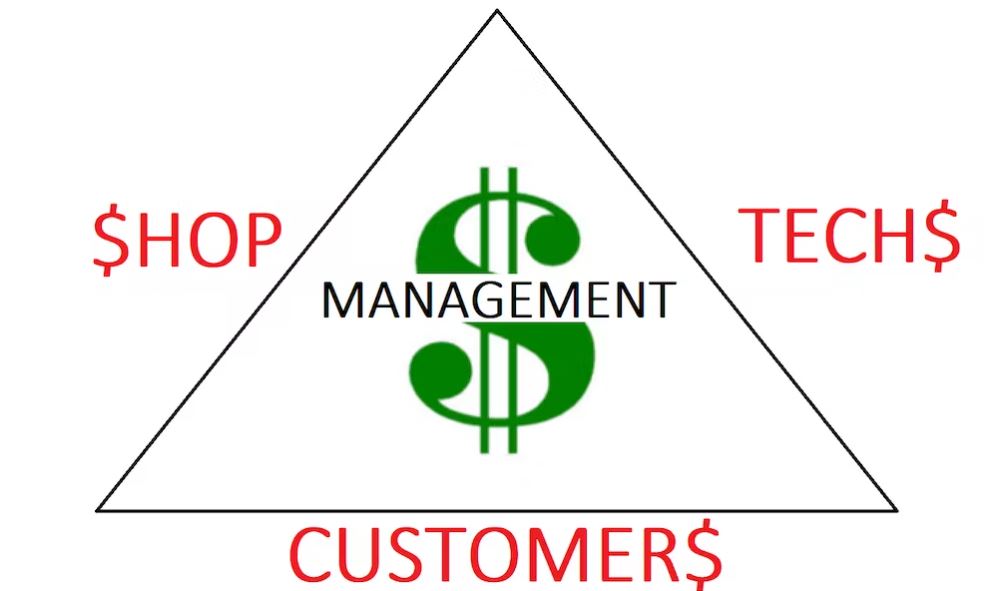You don’t have to personalize the process of selling diagnostics!
Have you ever had a customer come in with multiple symptoms, and all of them needed diagnostics?
The first reaction for the service advisor is often to personalize that customer’s problem. He or she has a strange smell, a weird noise, and a check engine light, and your experience tells you that those issues are probably all unrelated. The only way forward is going to be diagnostics to get to the bottom of each concern.
The key problem is, of course, that parts stores and chains have devalued diagnostics in the mind of drivers. They’ve created a perception that they can plug in a diagnostic machine and know exactly what is wrong with the vehicle just by replacing a part.
That’s an instant conflict for service advisors. They know that the customer needs hundreds of dollars of diagnostics before the repair can even begin. And they know that customer is probably going to ask if you can just do the diagnostics for free or ask you to apply the diagnostics toward their final repair bill.
It’s natural to feel this pain, but it’s not necessary. You don’t have to personalize the customer’s problems. There is a way forward where the customer gets their problem fixed right, the first time, where the shop charges for diagnostics, and where the tech is paid for their valuable time.
The secret to depersonalizing this dilemma starts with a triangle
Imagine a triangle with three equal sides. If you’re designing an office building or a bridge, this kind of equilateral triangle is critical, because the equal sides mean that stress is distributed evenly and the structure is as strong as possible.
On each side of this imaginary triangle is a label: one side says “employee,” another says “customer,” and the third says “business.”
This is the management triangle, and I’ve used it for years to help my team and me remember to keep all three sides in balance whenever there’s a decision to be made in the shop. The goal in each decision should be to grow all sides of the triangle evenly. In engineering or construction, a triangle with uneven sides can’t handle as much stress and is more likely to crumble, and it’s no different in management.
If the goal is to grow all sides of the management triangle evenly, who benefits when the shop does not charge the customer fairly for all the needed diagnostics?
When the shop doesn’t charge (or doesn’t charge enough) for diagnostics but asks the technician to perform them anyway, the technician loses because he or she is not paid for his or her valuable expertise. If the business pays the technician for his or her time without charging the customer enough, a different side of the triangle suffers. And if the shop doesn’t charge for diagnostics because the plan is to throw parts at the problem based on what the diagnostic tool says, then it’s the “customer” leg of the triangle that suffers.
No matter how you slice it, these outcomes are bad — for shop efficiency, for the customer, for the tech, and for the shop. The only outcome that benefits each side of the management triangle equally is one where the shop charges the customer for diagnostic time and pays the technician.
Of course, knowing that you need to charge for diagnostics and actually selling diagnostics are two very different things. If you’ve been uncomfortable selling diagnostic time until now, what’s the best way to get started?
The key is education
Job one in selling diagnostics is to set your shop apart from the customer’s experience elsewhere. Don’t assume that he or she understands the full problem. In the customer’s heart, he or she may hope that the smell and the noise and the check engine light are all connected.
Which means the customer needs to know your goal is to fix their problem right, right away, with as few parts as possible. He or she can either spend time now and a few dollars on labor, or he or she can spend a lot of dollars on parts and a lot more dollars on labor so that your shop can guess your way through the process until you land on the right solution.
Posturing here is critical, because the customer doesn’t want to know how bad you’ve got it. It doesn’t matter how busy you are or how much of a pain it is to diagnose issues like this. Not only does the customer not want to know these things, he or she shouldn’t know, because you’re not buying their problem.
The business transaction you’re discussing isn’t one where he or she agrees to pay you money and you agree to accept their problem. You’re not promising an answer in exchange for a fee. You didn’t design or manufacture that vehicle, and you didn’t purchase it or drive it, but you are here to work with them to get to the bottom of the problem.
And that is the crux of the matter, of course. The customer’s biggest concern is that he or she will end up paying something for nothing – especially when there are multiple diagnostics needed. That’s probably not far from the concern of most service advisors, that diagnostics will not uncover a solution and the customer will be upset.
This is why posturing is so critical, and why word-pictures are so important.
Instead of telling the customer that he or she is approving a series of tests and letting them picture what that means, compare it to trips to the doctor. Sometimes, the doc can shine a flashlight in your ears and throat and give you a prescription, and other times he or she needs to order more complex tests to understand what your symptoms mean. This puts you in the position of guide and protector. It also changes your primary goal to one of investigation.
This is where check-in forms and driveability checklists become critical. The better a job that the advisor can do at this point of asking questions about the intermittency and reproducibility of the issues, the faster the technician will be able to dial in and the more likely it is that the diagnostic time you sell will bear fruit. If your team asks the right questions every time, the customer, shop, and employees all benefit.
The application of the management triangle goes far beyond selling diagnostics
Other critical areas of the shop where keeping all sides in balance include how the team is incentivized. Is everyone working together to care for the customer and grow the shop? And what about your shop management solutions? Is the whole team more efficient and productive because of this software?
Start by drawing an actual management triangle and keeping it in sight on your desk. Remembering to keep the shop, customer, and employee in balance is much easier if you have the visual reminder in your eyeline during the day.
Above all, don’t compromise. The easy thing is to give in and let the parts stores and chains dictate the value of diagnostics. But the right thing – for everyone involved – is to make sure the customer understands, values, and approves diagnostics so that the shop and technician are fairly compensated, and the customer can receive the right solution, right away, and get back on the road safely and quickly.
Read the full article here on Vehicle Service Pros

